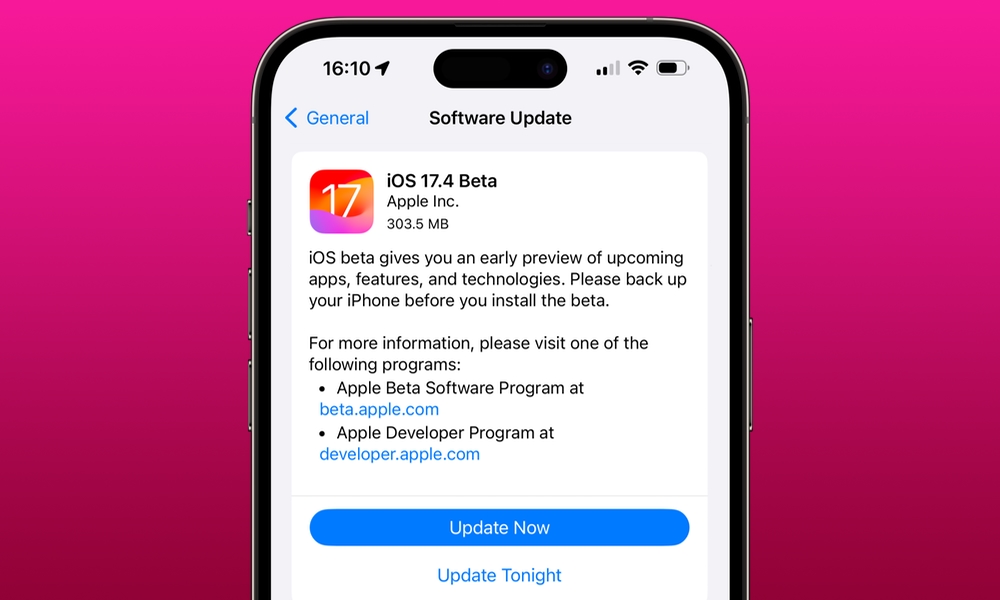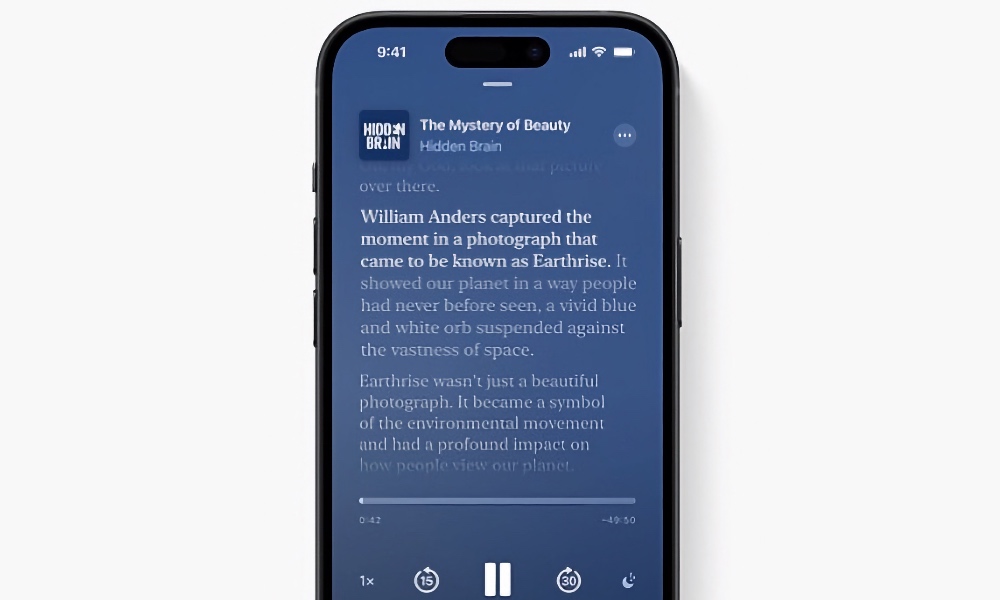Apple Releases Public Beta of iOS 17.4 — With a New Developer Beta

Toggle Dark Mode
It’s taken longer than usual for the first public beta of iOS 17.4 to appear, and we may have a hint as to why.
Last week, Apple released the first developer beta of the next iOS 17 point release, and while developer betas are typically followed by a public beta within 24–48 hours, the week concluded with no sign of a public beta release, and things remained similarly quiet as a new week began.
However, the first iOS 17.4 public beta suddenly appeared today, and surprisingly, it’s not the same beta that was released to developers on Thursday. The original developer beta had a build number of 21E5184i; today’s beta has been incremented to 21E5184k. That’s a subtle change, but a significant one.
With very few exceptions, public betas are almost always identical to the developer betas that precede them. The delay of the wider release ensures that the betas are stable enough to turn loose on public testers. After all, developers should know what they’re getting into — and shouldn’t run iOS betas on production devices anyway.
In this case, it seems there was some unspecified problem with that first iOS 17.4 developer beta. We’re unclear on exactly what that was, but it was serious enough for Apple to push out a new release today as the public beta — and as an update to last week’s developer beta.
This means that those who are part of Apple’s Developer Beta program should see a new iOS 17.4 beta 1 update under General > Software Update today; there’s no need to switch to the Public Beta program to get it.
Oddly, it’s not the first time this sort of thing has happened in recent weeks. At the beginning of January, Apple released a second developer beta of iOS 17.3 that bricked some people’s iPhones. That was a more obvious problem, so Apple didn’t wait for a public beta to fix it; instead, it pulled the beta only three hours later, re-releasing a new build the very next day.
Since we haven’t heard of any significant problems with the iOS 17.4 beta — certainly nothing as severe as the boot loop of iOS 17.3 beta 2 — Apple could presumably afford to wait a bit longer here. Nevertheless, today’s new beta suggests there was something Apple felt was important enough to fix that it couldn’t wait for the second beta, which will likely be along in another week or two.
After updating to the new iOS 17.4 beta, my iPhone re-registered for iMessage and FaceTime, both directly and on behalf of my Apple Watch — the two usual notifications to this effect popped up on my MacBook as soon as my iPhone 14 Pro Max came back from installing the update from 21E5184i to 21E5184k. However, nothing else obvious has changed here, and it’s possible that it might be nothing more than underlying code and developer APIs related to Apple’s controversial App Store changes in the EU.
What’s Coming in iOS 17.4?
While this might give public beta testers caution about jumping in right away — maybe wait for the second beta — it’s worth recapping what’s new in iOS 17.4 now that the public beta is out so you can decide for yourself if it’s worth it. Here’s a quick rundown:
- Apple Music adds the ability to create SharePlay sessions with an Apple TV or HomePod to allow guests and other family members to contribute to a single play queue. Think “Party Mix.” The catch with this one is that every device involved has to be running iOS 17.4 or the corresponding tvOS 17.4 or HomePod 17.4 updates. You won’t be able to do much with it otherwise. The “Listen Now” tab has also been renamed and rebadged to “Home.”
- Apple Podcasts now supports auto-generated transcripts. These are working quite well in the first beta, with the only catch being that we won’t see transcriptions for older podcast episodes for a while, as Apple probably has a few hundred million it needs to go through and process on its back-end servers. As with Apple Music, the “Listen Now” tab switches to a “Home” tab.
- There are 118 new emoji, but keep in mind that you won’t really be able to use them unless you’re communicating with folks who also have iOS 17.4 or another operating system that supports the new Emoji 15.1 standard. The good news is that most Android phones are already on board, as long as they’re running the latest Android 14 updates (and OneUI 6 for Samsung owners).
- The Stolen Device Protection feature introduced in iOS 17.3 gets an additional setting to let you always enforce the one-hour delay when changing your Apple ID password or other sensitive settings, whether you’re at a trusted location or not.
- A new section in Settings, Messaging with Siri, allows you to have Siri automatically read incoming messages in alternative languages.
- Safari gets a wider URL/search bar at the bottom. Exciting, right?
- The Clock app’s Stopwatch joins the timer in getting a Live Activity so you can watch it run from your Lock Screen or Dynamic Island.
In addition to the above features that should be available globally, iOS 17.4 also lays the groundwork for alternative app marketplaces in the European Union, along with the ability to run alternative full browsers with their own rendering engines and use third-party apps for NFC payments. However, even for users in the EU, none of these will show up as user-facing changes.
The opening up of the app ecosystem under the EU’s Digital Markets Act (DMA) is not full “sideloading,” so don’t bother looking for a switch in Settings to let you install app packages (IPA files) from anywhere. Instead, it’s a series of APIs that will allow developers to create app marketplaces that can be installed on the iPhone where apps can be downloaded and installed outside of Apple’s App Store. We probably won’t see any of those app marketplaces appear until March when the DMA comes into effect — and after iOS 17.4 is released to the public.







